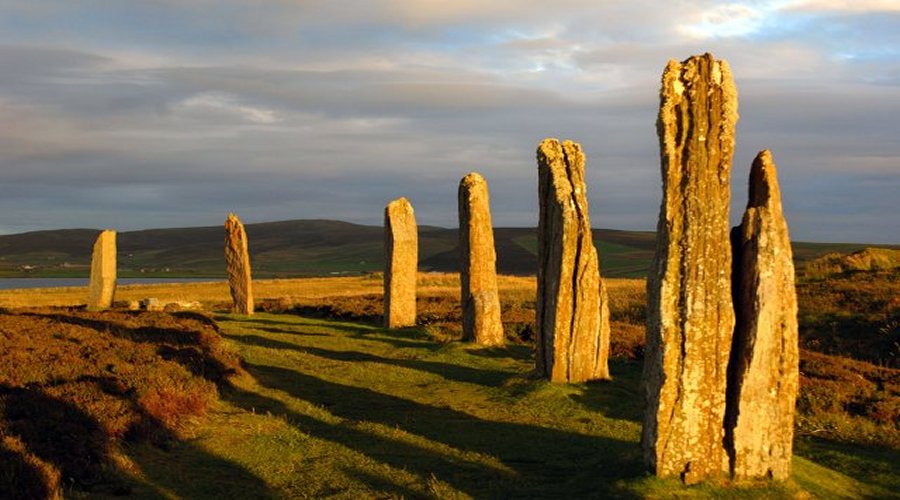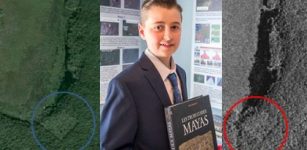Incredible 5,000-Year-Old Temple Complex In Orkney Could Re-Write History Of Scotland
MessageToEagle.com – The excavations at the Ness of Brodgar have been attracting a lot of attention recently and now it’s time for yet another surprise that could re-write the history of Scotland and change our image of prehistoric people who inhabited this region.
Ness of Brodgar is an archaeological site between the Ring of Brodgar and the Stones of Stenness in the Heart of Neolithic Orkney World Heritage Site near Loch of Harray, Orkney, in Scotland.

Although archaeological dig at the Ness of Brodgar are still at early stages, some very surprising and interesting discoveries have been made. Some of these findings will force us to re-evaluate our understanding of how our ancestors lived.
An important excavations of a 5,000-year-old temple complex in Orkney has revealed that prehistoric people in the region were in fact, much more sophisticated than previously thought.
Nick Card, an archaeologist from the University of the Highlands and Islands said that about three decades, the Orkney’s Maes Howe tomb, the Ring of Brodgar and the Stones of Stenness were considered as isolated ancient sites with separate histories. Now, this situation has changed. Researchers that investigate these ancient places, have found evidence that they have much in common as a connected community, although its purpose still remains unknown.

So far thousands of priceless artifacts, ceremonial mace heads, polished stone axes, flint knives, a human figurine, miniature thumb pots, beautifully crafted stone spatulas, highly-refined colored pottery, and more than 650 pieces of Neolithic art.
By far, these discoveries constitute the largest collection ever found in Britain: however, we have to remember that archaeologists have excavated only 10 percent of the Ness of Brodgar.
There can still be many more wonderful ancient surprises waiting for us.

“They had Stone Age technology, but their vision was millennia ahead of their time, Roff Smith, author of the National Geographic article who has studied the cache, is convinced Orkney was inhabited by people ahead of their time.
Five thousand years ago the ancient inhabitants of Orkney – a fertile, green archipelago off the northern tip of modern-day Scotland – erected a complex of monumental buildings unlike anything they had ever attempted before.
See also:
Picts: Facts And History About Mysterious People Of Northern Scotland
History Of The Saltire – Scotland’s National Flag And World’s Oldest Sovereign Flag
Brochs: Ingeniously Engineered Windowless Iron Age Structures Of North And West Scotland
Dandaleith Stone: Scotland’s Rare Symbol Stone Of The Picts – Will It Be Deciphered Now?
They quarried thousands of tons of fine-grained sandstone, trimmed it, dressed it, then transported it several miles to a grassy promontory with commanding views of the surrounding countryside.
Their workmanship was impeccable. The imposing walls they built would have done credit to the Roman centurions who, some 30 centuries later, would erect Hadrian’s Wall in another part of Britain. Cloistered within those walls were dozens of buildings, among them one of the largest roofed structures built in prehistoric northern Europe. It was more than 80ft long and 60ft wide, with walls 13ft thick, Smith said.

Smith noted that the complex featured paved walkways, carved stonework, coloured facades, even slate roofs at a time when buildings were usually covered with turf, hides, or thatch.
“Stand at the Ness today and several iconic Stone Age structures are within easy view, forming the core of a World Heritage site called the Heart of Neolithic Orkney.
On a heather-clad knoll half a mile away rises a giant Tolkienesque circle of stones known as the Ring of Brodgar,” Smith said.

“A second ceremonial stone circle, the famous Stones of Stenness, is visible across the causeway leading up to the Ness. And one mile away is an eerie mound called Maes Howe, an enormous chambered tomb more than 4,500 years old.”
Smith added: “The Ness of Brodgar appears to be the anchor piece – the showpiece, if you will – that links these other great monuments into one great monumental landscape of a sort nobody had dreamed existed. And to have had it lying underfoot, unsuspected, for so many centuries only adds to the sense of wonder surrounding its discovery.
“Bear in mind archaeologists and Victorian antiquaries have been poking over this ground for well over a century. What fascinated and surprised me personally was the engaging humanity of these Neolithic ruins.

“Although I have done quite a few archaeology stories, all over the world, I sometimes find it hard to warm up to the Neolithic. The long, long ago world they inhabited, the lives they led, seems too remote for me to grasp – at least well enough for my imagination to get some traction. Not at the Ness of Brodgar.
Orkney’s county archaeologist, Julie Gibson, who arrived in the islands more than 30 years ago to excavate a Viking cemetery, said: “I’ve heard this place called the Egypt of the North. Turn over a rock around here and you’re likely to find a new site.”
The fascinating discoveries made at the Ness of Brodgar show us once again that our ancestors were much more advanced than previously thought. In time, all these findings could re-write the history of Scotland as we know it.
© MessageToEagle.com
Expand for references









